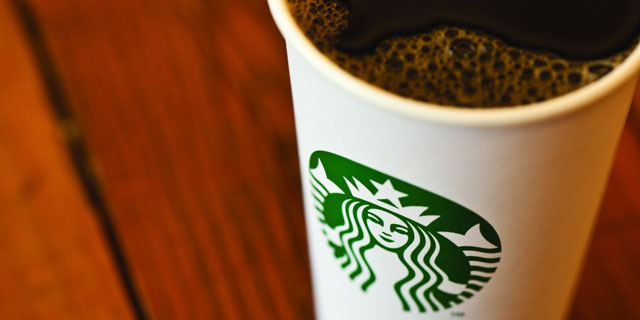As we wind down National Caffeine Awareness Month, we at TLK are wistful. We admit; we had no problem celebrating one of our favorite beverages with a few extra trips to our neighborhood Starbucks. You know, to sample the product and all. A friendly barista offered up her advice for understanding the different roasts: drink it black. Comparing coffee to fine wine, she explained that “adding milk and sugar to a coffee is like having a glass of sangria.” And since Starbucks boasts so many delicious coffees with Latin American roots, we wanted to demystify Starbucks’ Latin American beans and roasts. Enlisting the help of Starbucks’ own green coffee quality manager Anthony Carroll, we got the straight-up skinny:
TLK: How is Latin American coffee unique or different from coffee grown in other regions?
Where coffee is grown can truly define its flavor. Each growing region has a distinct landscape, climate and flavor profile for coffees that are grown and processed there. Growing regions are primarily found in Latin America, Asia-Pacific and Africa/Arabia with Latin American coffees celebrated for their crisp acidity with flavors of nuts, cocoa, and soft spice.
TLK: How does Starbucks blend its coffee?
Each year, Starbucks coffee experts taste more than 250,000 cups of coffee and travel the world to purchase the top 3% of the world’s best Arabica coffee beans to ensure the highest quality coffee is provided to customers. Starbucks’ philosophy of creating coffee blends relies on buying some of the world’s top-quality beans and combining them to achieve an intriguing interplay of flavor and aroma.
While we often blend coffees from different growing region to create new flavor profiles, different areas within a growing region may yield unique qualities that set them apart from their neighbors. For example, differences in altitude, local microclimate, or even farm may affect flavor. We often blend coffees together to showcase a particular growing region. Starbucks House Blend combines three great Latin American coffees into one brew that exemplifies the best flavor qualities of the region.
TLK: What is the difference between Starbucks’ three roasts – Blonde, Medium and Dark?
The Starbucks Roast is not a time, temperature or color – it’s a philosophy. We organize our coffees in three roast profiles, Starbucks® Blonde Roast, Medium Roast, and Dark Roast. As you move down the Roast Spectrum, you’ll notice the gradual change in the roast intensity and flavors. Moving from Blonde Roasts to Dark Roasts, the coffee’s body increases and flavors become fuller and more robust. We recommend sampling coffee from each roast category to determine the flavor you prefer.
TLK: Why did you decide to use only Latin American coffee beans in the Starbucks House Blend?
The blend of Latin American coffees delivers a medium bodied coffee that features lively acidity and clean, well-balanced flavor. It’s a great demonstration of Starbucks’ expertise in sourcing, roasting, and blending.
TLK: What coffees offered at Starbucks feature Latin American beans?
We meet the needs of our customers with several distinct product lines, letting us offer something relevant to everyone. Our core coffees are offered year-round and feature both single-origin Latin American coffees as well as multi-region blends. Many of our most anticipated seasonal coffees also showcase Latin American beans.
Finally, our Starbucks Reserve® premium line of single-origin coffees features some of the world’s most rare and exotic coffees from each growing region. Because of the limited availability, Starbucks Reserve® coffees are only offered for a limited time at select stores and represent the pinnacle of our coffee passion. Latin American coffees recently featured under the Starbucks Reserve® portfolio include Panama Paso Ancho and Colombia Supremo Valley of the Gold.
The basics covered, Carroll dissected our favorite Starbucks Latin American coffees along with suggestions on how to best pair ‘em.
[ pagebreak ]
Starbucks® Willow Blend™
Described as bright and clean, this blend of Latin American and East African coffees offer subtle citrus flavors, creating a breezy, easy-to-drink cup. With light body and high acidity, Starbucks® Willow Blend™ is a great complement to foods that have a hint of citrus flavor.
Starbucks® Veranda Blend™
This Latin American blend combines the delicate nuances of soft cocoa and lightly toasted nuts. When brewed, this coffee’s mellow and soft flavors, as well as its light body and medium acidity, truly shine. This coffee is best enjoyed with foods that highlight nuts or milk chocolate.
Medium Roasts
Guatemala Antigua
Grown at a high altitude with ideal soil for coffee growers, Guatemala Antigua features gentle spice flavors and a subtle cocoa-like texture. Pair with cocoa, apples, caramel or nuts to enhance the coffee’s soft spice notes.
Organic Yukon Blend®
A hearty, medium-bodied blend of Latin American and Sumatran beans, Organic Yukon Blend® is warm and smooth, revealing deep spicy notes – perfect with sweet flavors like cinnamon, raisins, oatmeal and chocolate.
Dark Roasts
Gold Coast Blend® – Morning Joe Edition
Complex and intense, this multi-region blend features our finest Latin American and Asia/Pacific coffees. Because of its great depth, this coffee is delicious when paired with tangy cranberry, woodsy maple, buttery-sweet caramel or dense cheesecake.
French Roasts
With an intense and smoky flavor, French Roast is one coffee that people either love or hate. Robust flavors of this blend of Latin American and Asia/Pacific beans is perfect for pairing with savory foods, like a bagel and cream cheese.



![Making Mealtime Matter with La Familia: Easy Sofrito [Video]](https://thelatinkitchen.com/wp-content/uploads/2015/10/sofrito-shutterstock__0-500x383.jpg)
![Easy Latin Smoothies: Goji Berry Smoothie [Video]](https://thelatinkitchen.com/wp-content/uploads/2015/12/goji_berry-shutterstock_-500x383.jpg)
















![Fun and Fast Recipes: Fiesta Cabbage Salad [Video]](https://thelatinkitchen.com/wp-content/uploads/2015/11/fiesta_cabbage_slaw-shutterstock_-500x383.jpg)









